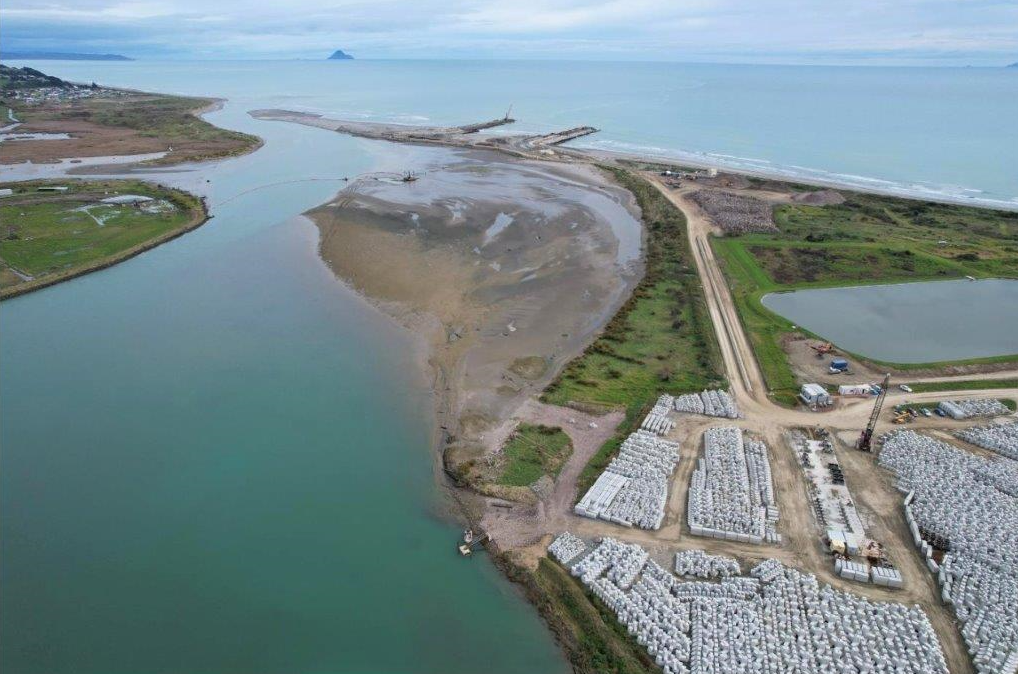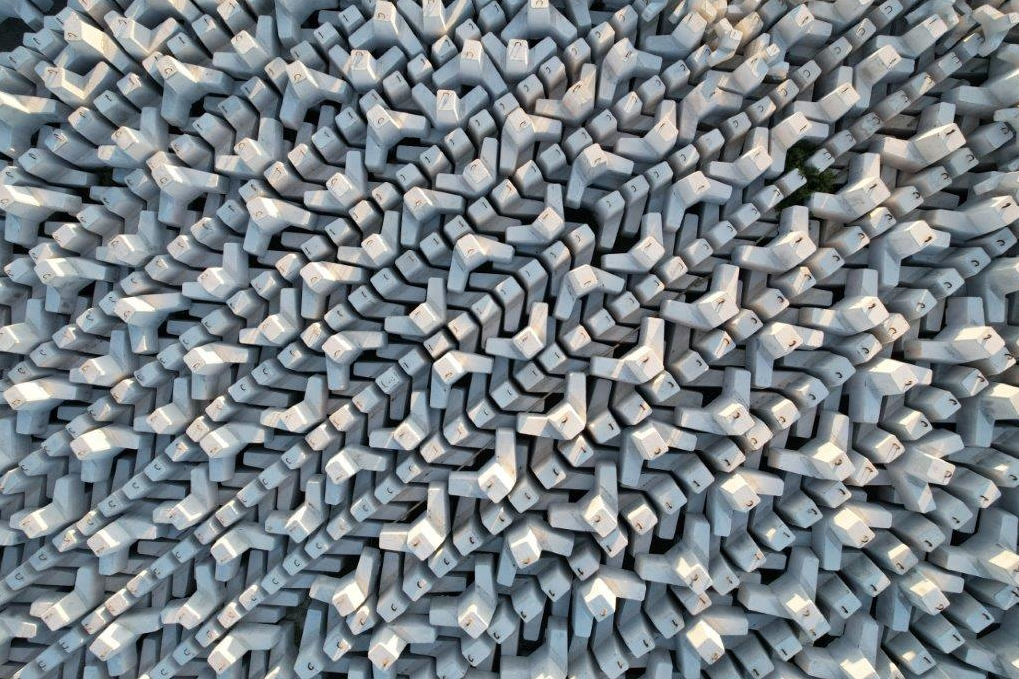
Director of Eastern Bay Concrete, Shane Clark, said that the first hanbar was cast back in October 2020 and around 12,000 hanbars had been cast with his company’s concrete since then. He said that the last couple of years have been very busy for his team as they scaled up to deliver concrete to HEB Construction [Lead contractor on the Ōpōtiki harbour design and build] for the seawalls.
“At our peak, we were supplying 90m3 (about 20 truck-loads) of specialty concrete to HEB Construction each day to be formed into these large hanbars.
“We met the strictest quality standards for our product because the hanbars are designed to stand the test of time in a complex marine environment. HEB set very high standards for quality and volume of product and we were able to meet those demands.
“Eastern Bay Concrete upscaled significantly to meet the production requirements on a project the size of the Ōpōtiki Harbour entrance. The support we had from Government was instrumental in this growth. We grew from a small team of 8, up to 19 people when we were at full production. We installed a new concrete plant, taking production capability from 20m3/hour to 60m3/hr and purchased four additional concrete trucks to meet the requirements of this project and other large projects that are set to start over the next few years.
“This illustrates that smaller business like ours are willing and able to grow their infrastructure and local workforce to take on these large contracts. We are well-placed to meet the coming demand as other large projects come online across the region,” Mr Clark said.
Mr Clark also emphasised the importance of local businesses doing as much of the work as possible on large-scale infrastructure projects due to maximise long-term benefits for the local community. This local workforce focus was built into the contacts from the very start of the Ōpōtiki Harbour project and continues through all stages.
“As a company we have gained a lot of new expertise and experience through the harbour development project. We take a lot of pride in our role in the development of the aquaculture industry here in the Eastern Bay of Plenty. The enthusiasm, hard work and dedication of my team at Eastern Bay Concrete has been second to none. Our team, who are all locals, see this growth in Ōpōtiki’s infrastructure as a direct benefit to them and their families, now and into the future,” Mr Clark said.
Ends
Hanbar concrete reinforcing units range in size from 2-tonne (1.2m tall) to 15 tonnes (2.4m tall). The moulds were constructed using local company C Hayes Engineering.
Images (higher resolution available on request):
- Close up of hanbar units stacked and ready for use
- Aerial image of hanbar storage area, dredging, and seawall construction
- Shot of first hanbar cast gives an indication of size
- Shot of hanbar units being placed along lengths of seawalls
More images and details on the Ōpōtiki Harbour project are available on the Ōpōtiki District Council website or Facebook page (search our Facebook page for “harbour” for most recent updates). More details are also available on various aspects of this work including concrete durability testing, quarrying, design and build of the seawalls.
Associated story – In 2021, HEB Construction, Hayes Engineering and Seymour Transport delivered a 2-tonne hanbar unit to 20 local kura. Resene supplied paint and the kura were invited to paint their hanbar in their own designs and colours. These will be placed in a few strategic locations when works are finished, for example at access points, on the harbour walls or near parking. Plaques will be attached, identifying each kura and acknowledging funding partners including Whakatōhea Māori Trust Board, Ōpōtiki District Council and Kānoa – Regional Economic Development & Investment Unit.

